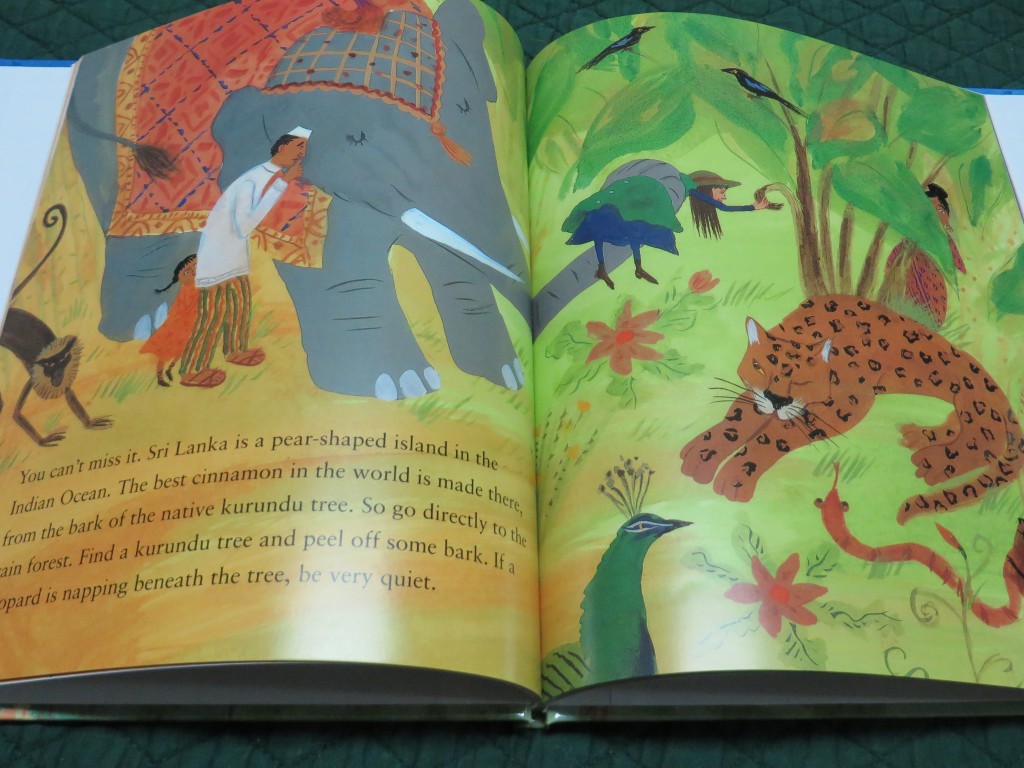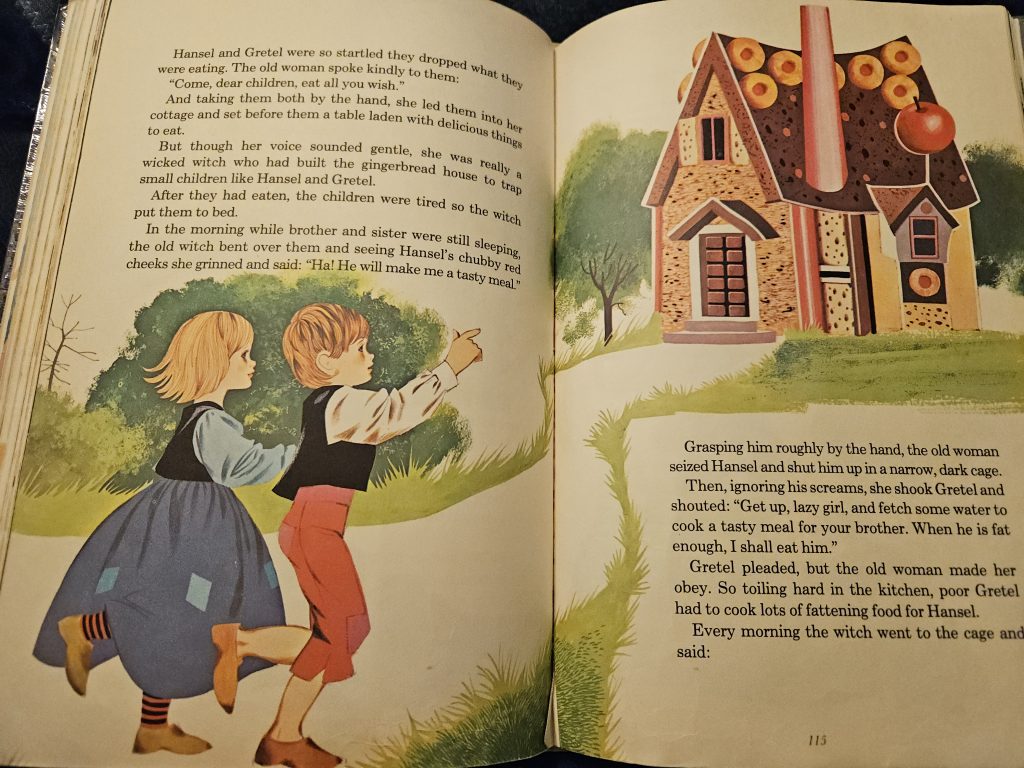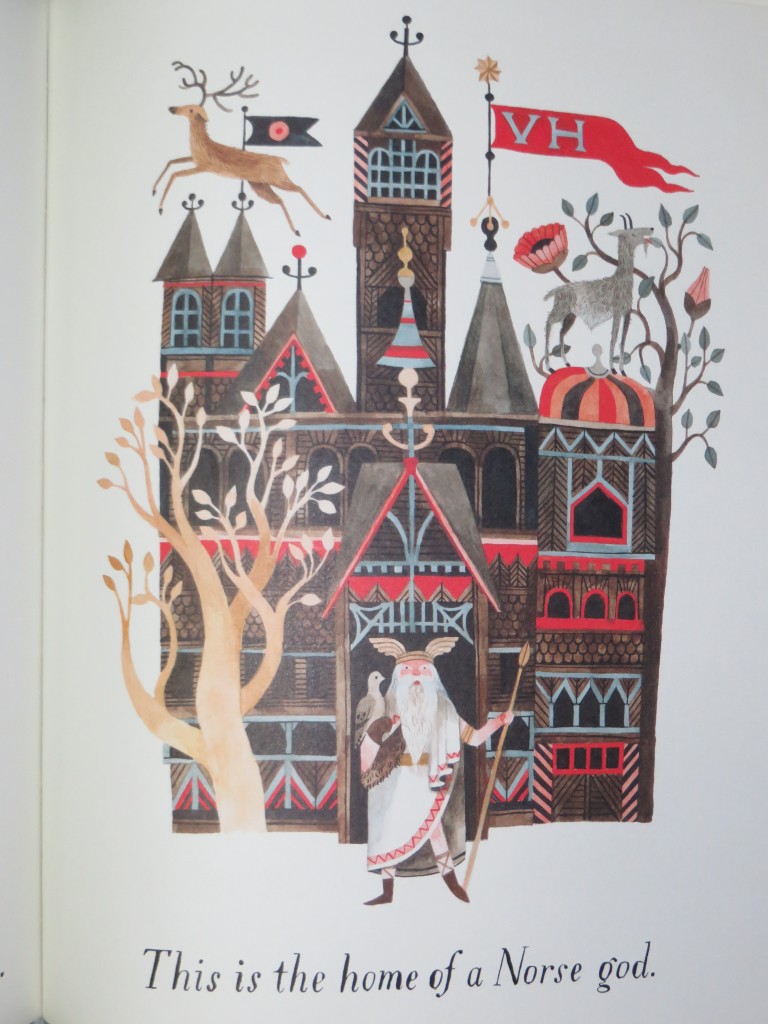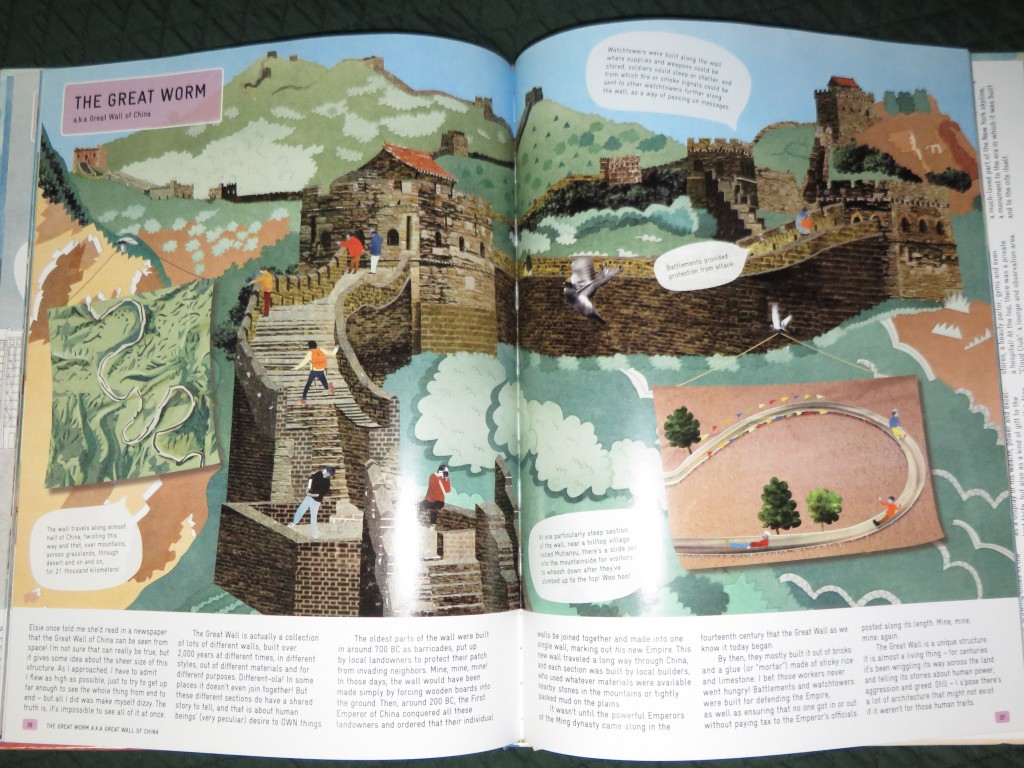
Making an apple pie is really very easy.
First, get all the ingredients at the market.
Mix them well, bake, and serve.
Unless, of course,
the market is closed.
In that case, go home and pack a suitcase.
The pie-craving protagonist travels to Italy (for wheat), Frances (for a chicken that lays “elegant eggs”), Sri Lanka (for kurundu bark), England (for a cow to provide milk), Jamaica (for seawater and sugar cane), and Vermont (for apples). Once the traveling is through, all she will have to do is:
mill the wheat into flour,
grind the kurundu
bark into cinnamon,
evaporate the seawater
from the salt,
boil the sugar cane,
persuade the chicken
to lay an egg…
Well, you get the idea. This book is thoughtful, colorful, and quietly funny. Perhaps it was inspired by the famous Carl Sagan quote: “If you wish to make an apple pie from scratch, you must first invent the universe.” (My youngest swears by the apple pie recipe on the last page.)
Author: Marjorie Priceman
Illustrator: Marjorie Priceman





